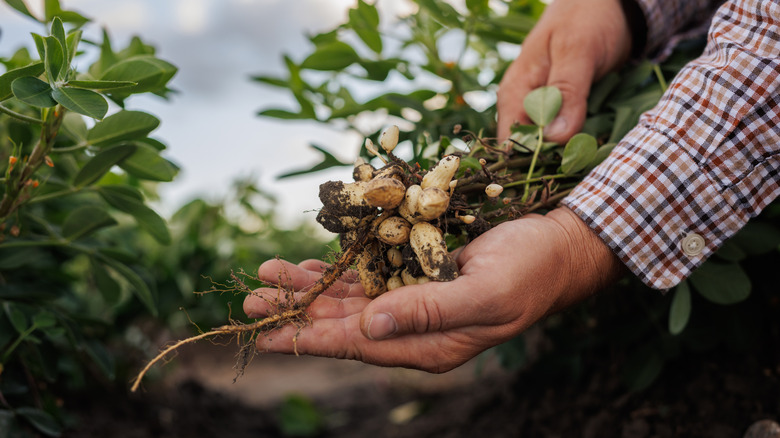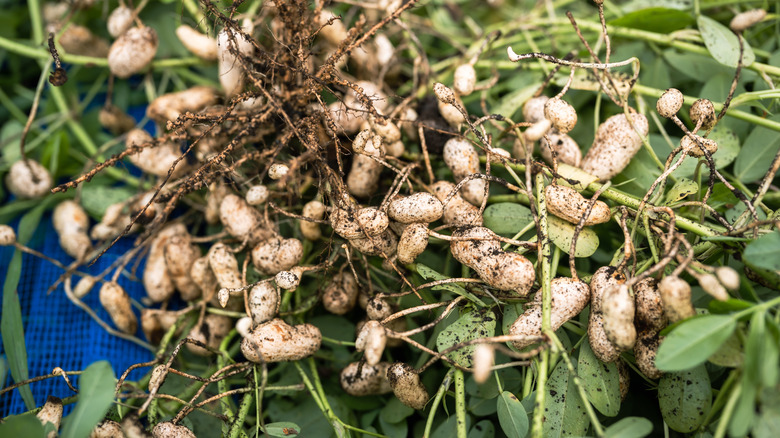The Heat-Loving Nut Plant You Can Grow In Your Humid Vegetable Garden
Before you find yourself desperately trying to protect plants from brutal heat, start off by choosing options for your food garden that are already adapted to high temperatures and sweltering humidity — such as peanuts. Peanuts don't grow on trees like walnuts and pecans. This annual food crop is a legume that has a bushy growth form. But unlike its family members, bush beans and garden peas, which bear their pods among their foliage, the peanut is a groundnut that produces its pods under the soil and it thrives in hot weather.
Grown from seeds that require toasty temperatures in a range of 68 to 95 degrees Fahrenheit to germinate, these legumes produce plants that grow up to 2 feet tall and 3 feet wide. Peanuts are a warm season crop, requiring gardeners to wait until their last spring frost has passed before sowing seeds in the garden, so in the US peanuts are primarily grown in the humid Southeast states where the warm season is long. Peanut plants have adapted to the high heat found in the region, tolerating temperatures up to about 100 degrees without stress. Gardeners who would like to try growing their own stash of groundnuts should make sure growing season is long enough in their area.
Growing peanut plants as a heat-tolerant garden crop
If a long growing season of around 120 days without frost is not available, gardeners can use hoop houses or cold frames to extend the growing season. As for soil conditions, a pH of 6.0 to 6.5 is best — you can measure the pH of your soil if needed. Also, light textured, sandy loam soil is ideal for this crop since soils that are heavy or compacted can prevent pod production. True to their heat-loving nature, these plants require full sun to thrive, and should ideally be sown with an inoculant upon the first planting to help these legumes fix nitrogen.
Although these groundnuts have some drought tolerance, it's best to keep your plants well-watered throughout their lifecycle except for the last couple of weeks prior to harvest. After the leaves turn yellow, plants must be harvested and cured in a dry location for up to two weeks before the peanuts can be stored in their dried hulls. After masting the art of growing peanuts, gardeners may seek to complete their garden with additional vegetable plants that can handle the summer heat, such as sweet potatoes.

